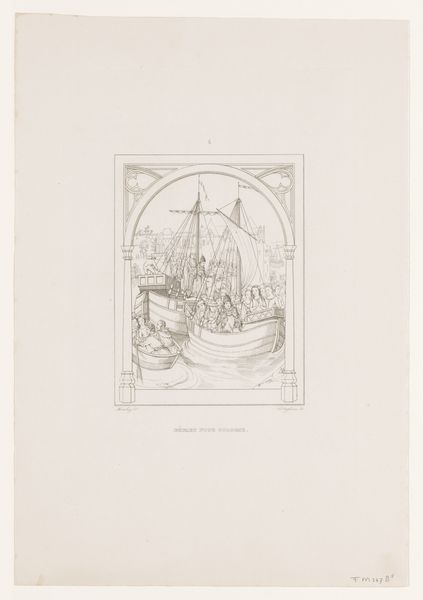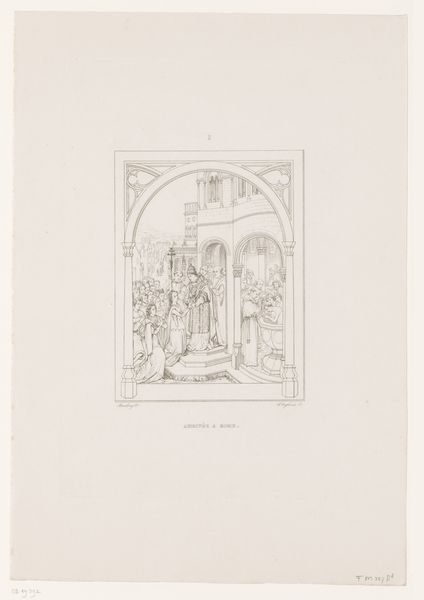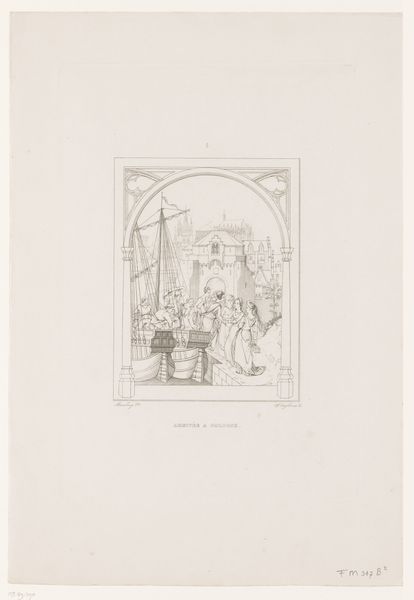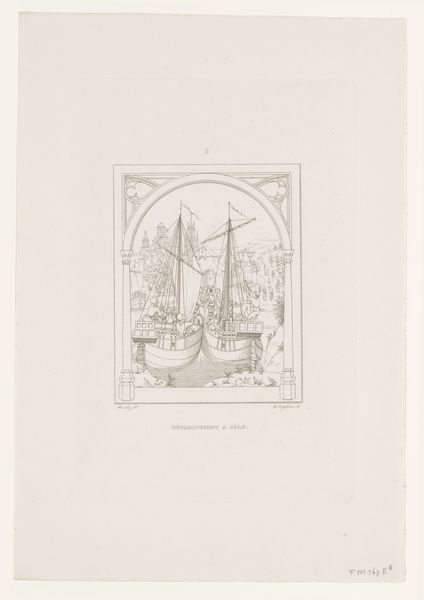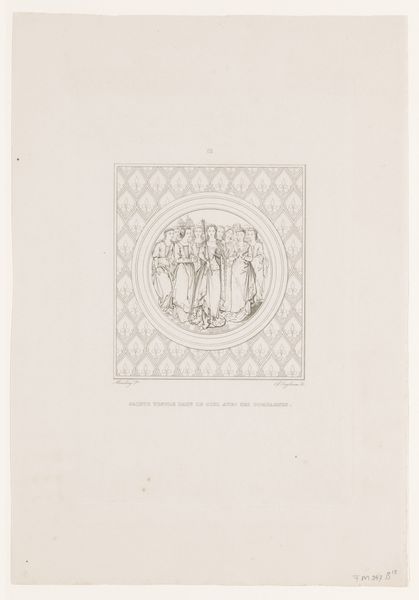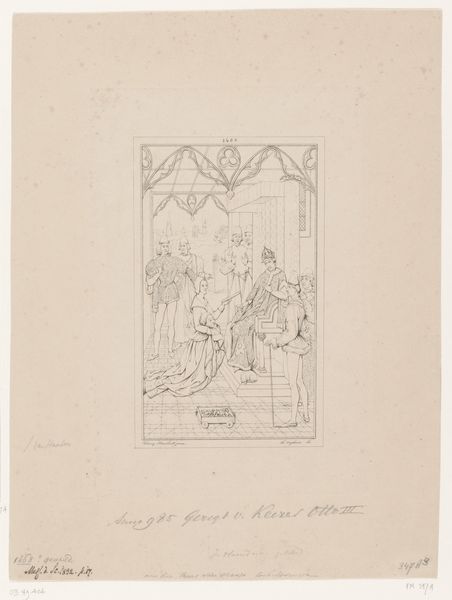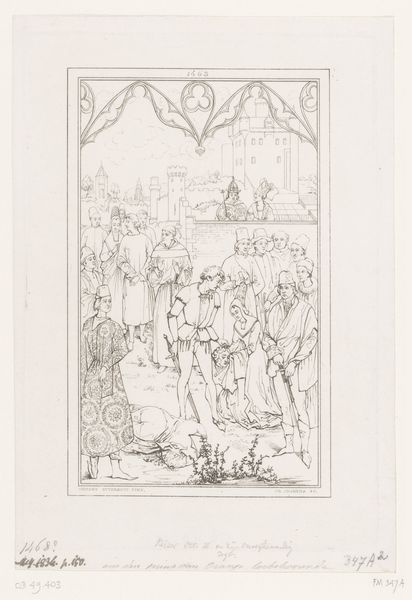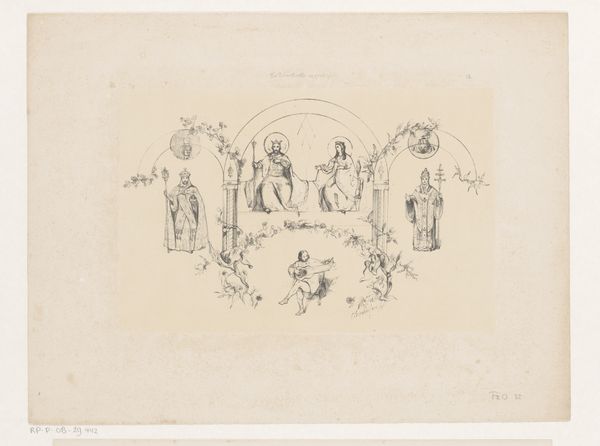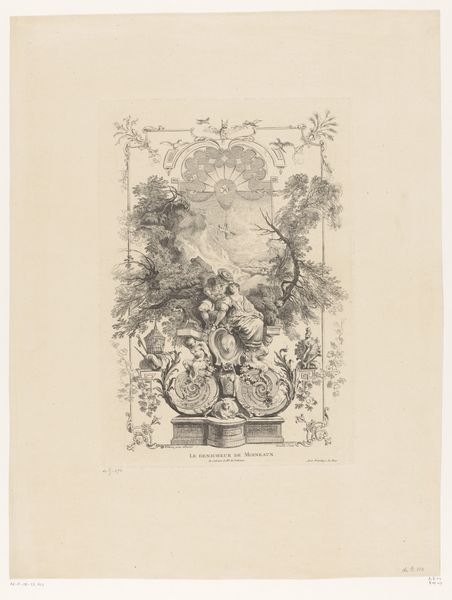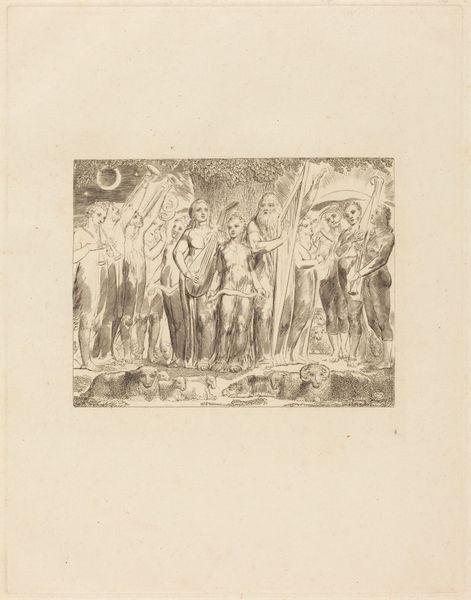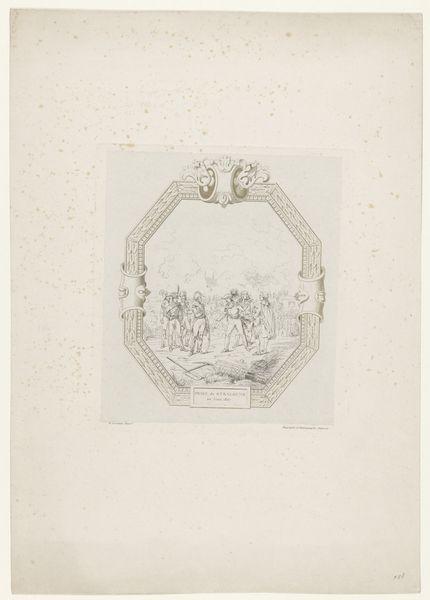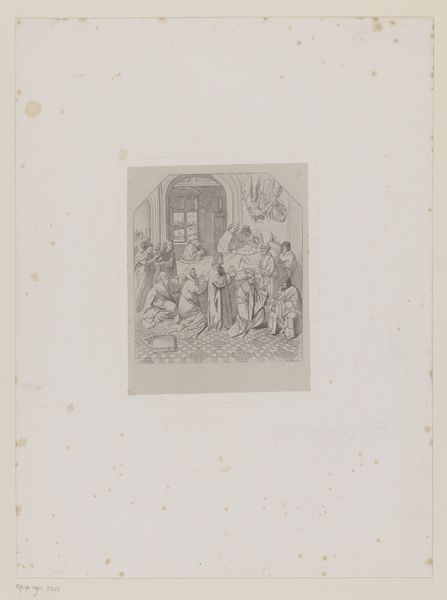
print, etching, paper
#
medieval
#
narrative-art
# print
#
etching
#
old engraving style
#
etching
#
figuration
#
paper
#
history-painting
Dimensions: height 275 mm, width 187 mm
Copyright: Rijks Museum: Open Domain
Curator: This delicate etching by Charles Onghena, made in 1841, depicts the death of Saint Ursula. It's a fascinating example of 19th-century engagement with medieval themes. Editor: It's remarkably serene, isn't it? Despite the title, there's an ethereal quality to it, almost as if Ursula is floating away rather than succumbing to anything violent. It’s rendered with such fine lines. Curator: Precisely! Onghena captures a key moment within a dense web of historical narratives about female piety and persecution. Ursula, as legend has it, was a British princess martyred along with her 11,000 virgin companions. This piece places their narrative squarely within history painting traditions, though using the medium of print, enabling it to be accessible to wider audiences. Editor: I am struck by the formality of the setting – enclosed by a Gothic archway. And did you notice the dog at the feet of the main characters? Almost a throwaway detail amidst what is after all a gruesome event… Maybe hinting that even at the site of a martyr, everyday life continues? I feel a poignant irony here. Curator: I see what you mean. Zooming out for a second, it's important to consider how history painting, particularly representations of women’s martyrdom, were tools for moral instruction, serving a patriarchal worldview. Ursula becomes a figure of ideal femininity – obedient even in death. The scale, composition, and materials matter when we think of it this way, challenging any 'serenity'. Editor: Yes, I agree – there are so many layers. You can get totally lost in those details though – while it would also be nice to focus on the visual harmony and elegance of execution of the print. Perhaps the appeal is both the tragic subject and technical refinement! Curator: Absolutely, and thinking of how Onghena might have drawn from both art history and prevailing cultural values adds crucial depth. The artwork certainly rewards different perspectives, so maybe it makes sense that our perspectives differ too? Editor: Indeed! It is often in the act of sharing our own interpretations that we allow new voices into a familiar story.
Comments
No comments
Be the first to comment and join the conversation on the ultimate creative platform.
